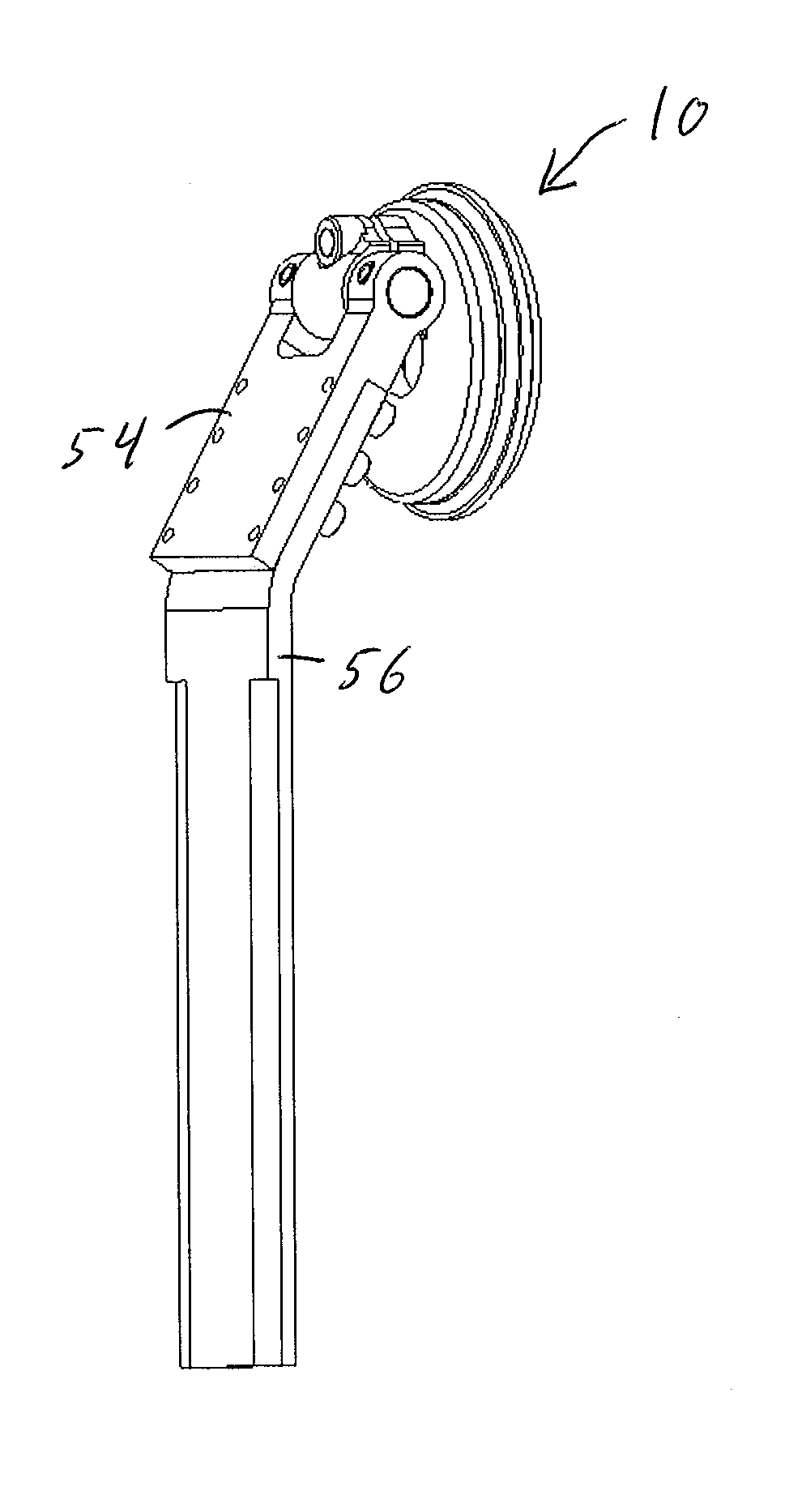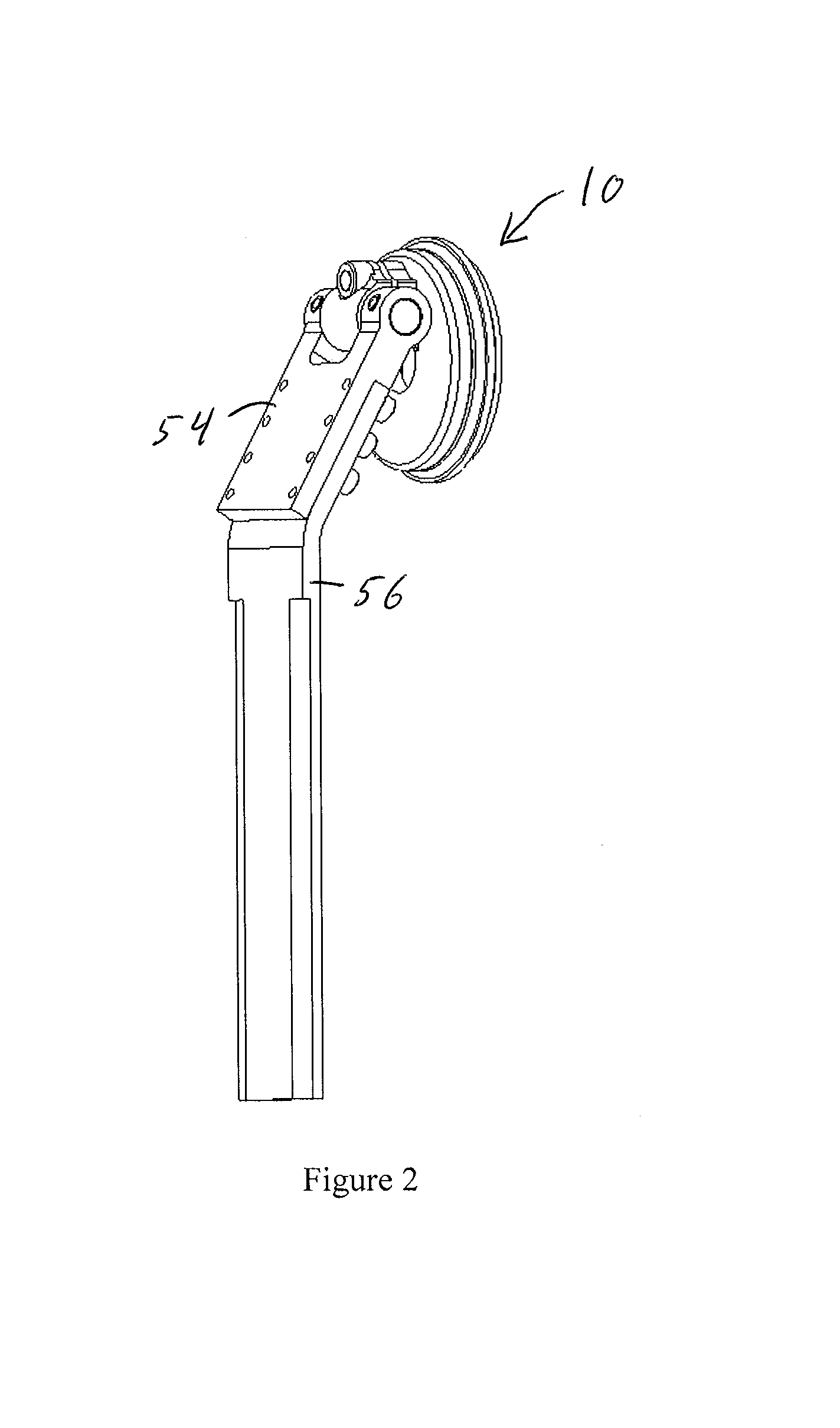Locking shoulder joint
a shoulder joint and locking technology, applied in the field of prosthetic shoulder joints, can solve the problems of increasing comfort during walking, requiring excessive repositioning by users, and unable to use these joints in the free, and achieve the effect of adequate range of motion
- Summary
- Abstract
- Description
- Claims
- Application Information
AI Technical Summary
Benefits of technology
Problems solved by technology
Method used
Image
Examples
Embodiment Construction
[0040]The invention features a prosthetic shoulder joint that preferably locks in 36 positions, or every 10 degrees. This resolution is preferred to allow the user to position the limb as needed. The user can trip the lock mechanism even when the locking plungers are not lined up, and as soon as the joint reaches the nearest 10° position, the lock auto-engages. There is no need to pre-align the locking components manually, thus making it easier to engage the lock. Additionally, the joint can be unlocked under a moderate load, a feature seldom found in locking prosthetic joints.
[0041]The lock may easily be engaged or disengaged with a manual lever actuator. Alternatively, the lock may be actuated using a remote mechanical or an electric actuator. Remote actuation is needed when the user cannot access the lock release mechanism directly. For example, a bilateral amputee would benefit from the optional electric actuator.
[0042]An alternator mechanism activates the lock. Thus, only pull ...
PUM
 Login to View More
Login to View More Abstract
Description
Claims
Application Information
 Login to View More
Login to View More - R&D
- Intellectual Property
- Life Sciences
- Materials
- Tech Scout
- Unparalleled Data Quality
- Higher Quality Content
- 60% Fewer Hallucinations
Browse by: Latest US Patents, China's latest patents, Technical Efficacy Thesaurus, Application Domain, Technology Topic, Popular Technical Reports.
© 2025 PatSnap. All rights reserved.Legal|Privacy policy|Modern Slavery Act Transparency Statement|Sitemap|About US| Contact US: help@patsnap.com



